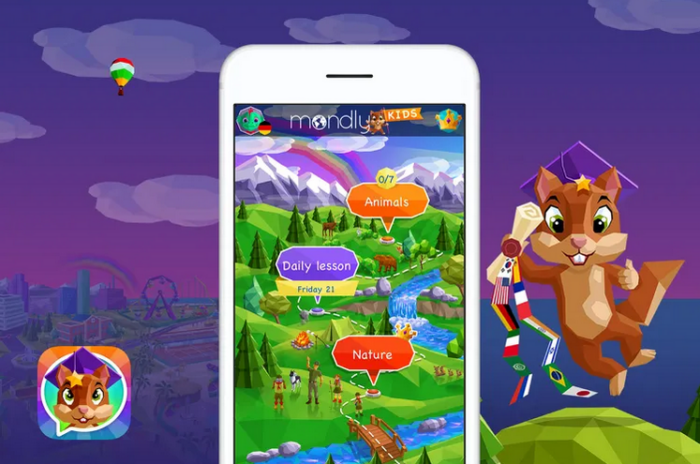Foreign Language Learning: Why Grammar Translation Doesn’t Work?
Read other articles:
Back to posts
Table of Contents

The grammar-translation foreign language learning method is highly unlikely to get any language learner beyond the beginner stage.
Many classrooms — and even many of the so-called “latest” foreign language learning apps — employ this traditional learning method to teach languages. Grammar translation focuses on reading and translating sentences that demonstrate specific grammatical rules between the target language and the native language.
You’re probably familiar with this method if you learnt a foreign language in high school. It stems from how Latin was taught in Victorian times and before — well over a hundred years ago — encouraging students to memorize grammatical rules and long lists of vocabulary by heart.
Amazingly, this remains the most popular language-learning method because there are many more effective options available today.
If you’re aiming for near-native-speaker proficiency with a foreign language and would like to accelerate your learning, we recommend downloading a free Chrome extension for help when watching YouTube videos in the native language (more about this later).
Otherwise, read on to find out why the traditional grammar-translation method is unlikely to progress you beyond the beginner stage.
Otherwise, read on to find out why the traditional grammar-translation method is unlikely to progress you beyond the beginner stage.
1. Quick but shallow learning
If you find an unfamiliar phrase in the text of a language you’re learning, what do you do? You likely hit Google or your language app and translate the phrase. It’s quick and convenient but ultimately no better than learning from a dictionary.

The chances of you remembering and recalling that phrase — and using it correctly in context — are quite low. This is because the learning process has usually been purely transactional with very little engagement in the topic and limited visual cues.
The same applies to flashcards and other props that use the grammar-translation method. You are encouraged to quickly translate a word (often with little or no context) from the target language to your native tongue or vice versa. But flashcards are a largely inefficient way to learn.
Grammar-translation ultimately encourages fast but shallow learning and, while it may work for beginners who want to quickly acquire a few basic words and phrases, it will do little for serious language learners who are striving for fluency, native-speaker proficiency and want to start thinking in the language.
2. Teaching is NOT in the target language
With grammar-translation learning, instruction is usually in the native tongue rather than the target language. Again, that may be fine for beginners but not language learners with loftier aspirations.

According to second-language acquisition research, learning is most effective when we receive instruction in the native language. It enhances immersion into the language and provides valuable listening and reading practice for learners.
This may initially seem like a tougher way to learn for some foreign language learners but, ultimately, it will increase “absorption” of the language and pay dividends if you aspire to a high level. And if you’re wondering whether you need a teacher to learn a language, that’s a good question! Researcher Rod Ellis found that formal classroom instruction is not necessary as the developmental sequence of language acquisition is the same whether the language is learned inside or outside of the classroom.
3. Over-reliance on tests and output
One of the best lessons we learn in school as language learners is that three or four years of learning using traditional methods achieves little! It may get some students to the level of being able to order food in a restaurant — but little besides.
All the quizzes, tests, vocab lists, verb charts and so on are largely in vain.

Language guru, Stephen Krashen, may explain this. He says that the key to learning languages is receiving comprehensible input in an anxiety-free environment.
School learning using the grammar-translation method ticks none of these boxes. Instruction is delivered in the learner’s native tongue, focuses on tests and output (speaking and writing) rather than input (listening and reading) and the environment is often highly stressful because students are scared of being made fun of in class.
The grammar-translation method assumes that if you learn the rules of a language, you master it. But we all know that there’s a lot more to really knowing a language than learning the past tense or whether certain nouns are masculine or feminine.
If you ask an average native English speaker in the street what the present perfect of the verb to have is, they may struggle to answer. Yet they’ve all known how to correctly use “I have had”… “She has had”, etc. since childhood.
If you aspire to speak like a native speaker, learning the language rules may be a start but more implicit linguistic knowledge of the language is required before you’ll approach anywhere near the required level. It takes regular exposure to target language input rather than frequent testing and output. Language acquisition will then take place, much like how a child learns a language.
4. Little natural context is provided
Second-language acquisition (learning a foreign language) is always tougher than first-language acquisition (learning as a child) but grammar-translation does little to address this — partly because of the lack of context.
A child acquires a language by listening and, when they are developed (and confident) enough, they essentially mimic the use of words and phrases. While it takes some practice, they learn context by listening, eventually using language appropriately in different situations. The context is part of what makes it memorable and recallable.
Limited or no context is provided with grammar-translation. You may be asked to read a dialogue in a restaurant from a textbook, for instance, to practice the use of “I would like…”.

However, you don’t experience the surroundings of the restaurant, interact with the guests at the next table, see the body language of the waiter, and so on. You don’t get to understand when it’s appropriate to use more formal language or casual terns (a high-class restaurant as opposed to a cheap café, for instance).Context provides important language learning pointers. Isolated example sentences that demonstrate a grammatical rule are an essentially unnatural way to learn.
5. Lack of engagement with the topic
Stephen Krashen identified another important element of the comprehensible input required to learn a language effectively. That’s compelling content — and it’s another area where the grammar-translation method of learning fails miserably.
Boredom and lack of motivation can certainly be a problem when learning anything. Most foreign language students who aspire to advanced proficiency don’t suffer from this but they still require interesting, compelling, relevant content to inspire learning.
It’s unlikely that anything in the grammar-translation method will provide this — even if it originates from a language learning app that tries to “gamify” the learning experience and jazz it up with quizzes, music, and flashing lights!

Why the answer to foreign language learning is video…
Are you learning a second language so that you can live and work in that language?
If so, learning the language through native speakers is a far more efficient and effective method than trying to memorize word lists.
If you can’t surround yourself with native speakers all the time, the second-best solution is to learn from as many native speakers as possible through other means. Thankfully, we have many tools at our fingertips to make that happen from anywhere in the world — and for almost any language on the planet.
We all know YouTube. Language learners have access to a huge library of potential input from which to learn: language teachers, native speakers and interesting, engaging videos on every conceivable topic.
There’s a way to utilize video in a targeted way to learn a foreign language effectively — on your own and with no language teacher…
Advance your foreign language learning…
Most language-learning apps simply digitalize the grammar-translation method and teach languages in the learner’s native tongue. It’s OK for beginners but won’t get more ambitious speakers to their desired level.
Our language-learning app is different. With our free Chrome extension, you can start learning from native speakers of your target foreign language through YouTube videos.
We use ChatGPT to enrich the learning experience –which is as close as it gets to having a language teacher around most of the time. You will acquire language naturally and learn new words and phrases in context.
While any language student can learn quickly this way, it’s a particularly effective way for moderate-level speakers to become more advanced. Download the app and get started.
Read other articles:
Back to posts
